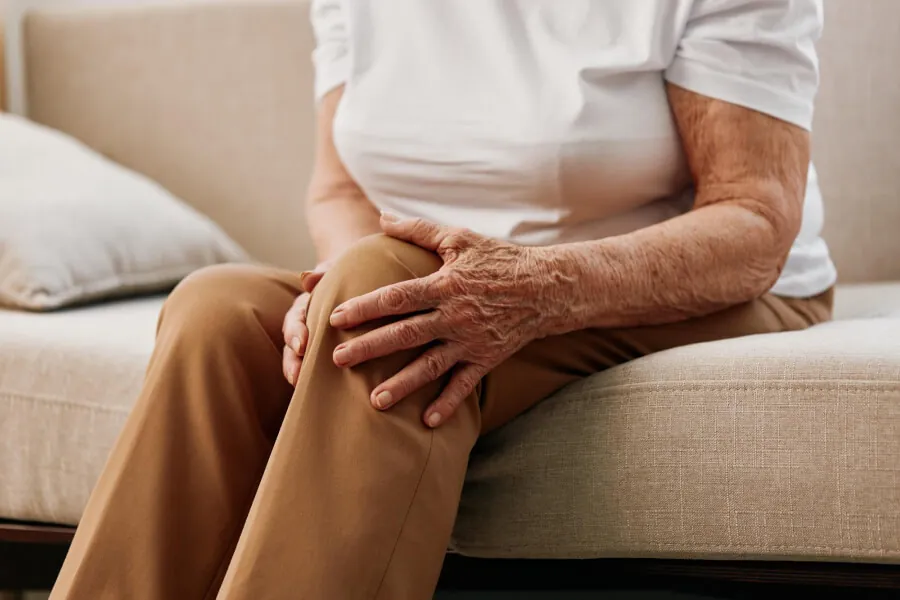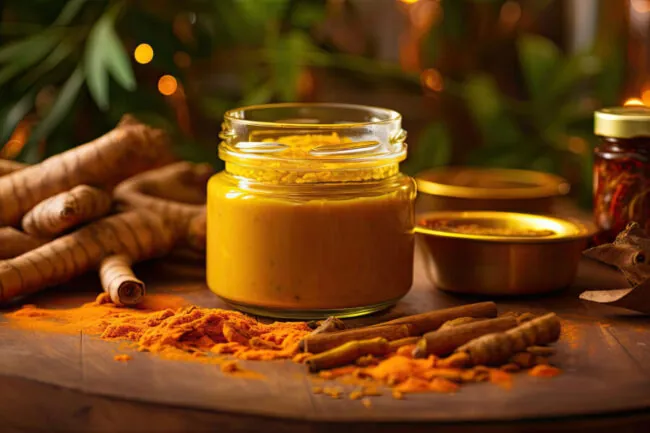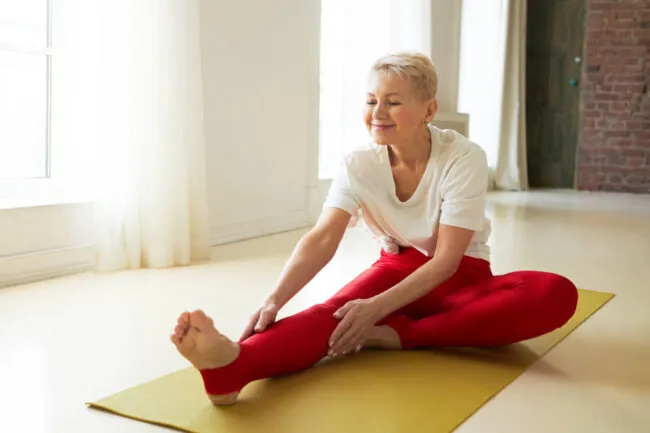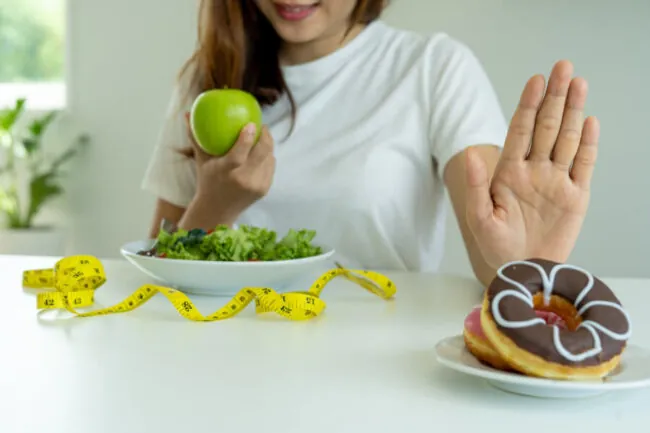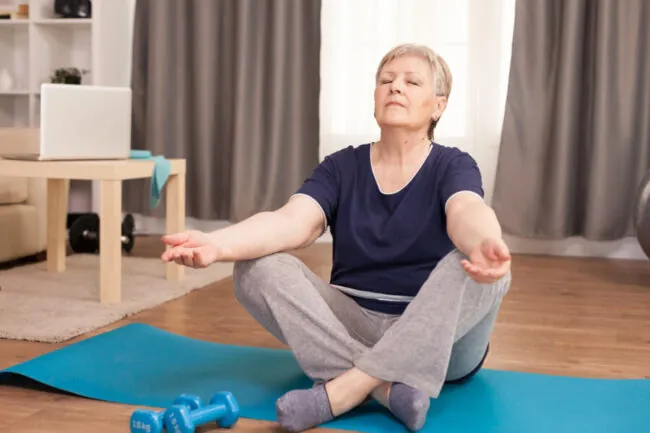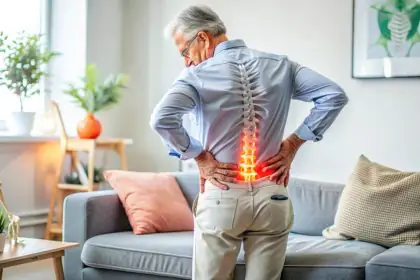Knee pain can be a tough issue to deal with, affecting people of all ages, but it’s especially common among seniors.
Modern medicine offers you a range of treatments, but sometimes, the wisdom of ancient remedies, passed down through generations, can provide surprising relief.
Let’s explore seven of these time-honored secrets, which grandmothers have been using for generations to keep knee pain at bay.
Grandmother’s secrets to banish knee pain
Using turmeric to its full potential
Turmeric has been a mainstay in traditional medicine for centuries. This golden spice contains curcumin, a powerful anti-inflammatory compound.
How to Use:
- Golden Milk: Mix a teaspoon of turmeric powder with warm milk and a dash of black pepper (which enhances curcumin absorption). Drink this soothing beverage daily.
- Turmeric Paste: Combine turmeric powder with water to make a thick paste. Apply this directly to the knee, cover with a cloth, and leave it on for about 30 minutes before rinsing off.
Using epsom salt for grandma’s pain
Epsom salt, rich in magnesium sulfate, has been used for generations to relieve pain and inflammation.
How to Use:
- Epsom Salt Bath: Add two cups of Epsom salt to a warm bath and soak for 15-20 minutes. This helps reduce swelling and relaxes the muscles around the knee joint.
Incorporating Ginger in Your Daily Routine
Ginger is another potent anti-inflammatory root that has been used in traditional medicine for ages.
How to Use:
Ginger Tea: Boil fresh ginger slices in water for 10 minutes, strain, and add honey to taste. Drink this tea two to three times daily.
Ginger Compress: Grate fresh ginger and wrap it in a cloth. Place the cloth on the knee for 15-20 minutes to help reduce pain and inflammation.
Physical Activities for Strengthening Knee Joints
Gentle Yoga Poses for Knee Strength
Yoga can significantly improve knee strength and flexibility.
Recommended Poses:
- Warrior Pose: Strengthens the quadriceps, which support the knees.
- Bridge Pose: Enhances the strength of the hips and knees.
- Chair Pose: Builds strength in the thighs, knees, and calves.
Simple Knee Exercises for Mobility
Regular, gentle exercises can maintain knee mobility and reduce pain.
Recommended Exercises:
- Straight Leg Raises: Lie on your back with one leg bent and the other straight. Lift the straight leg to the height of the bent knee and hold for a few seconds before lowering.
- Heel Slides: Lie on your back with both legs straight. Slide one heel up towards your buttocks, then slide it back down. Repeat with the other leg.
Dietary Changes for Alleviating Knee Pain
Anti-Inflammatory Foods to Reduce Knee Inflammation
Diet plays a crucial role in managing inflammation.
Foods to Include:
- Omega-3 Fatty Acids: Found in fish like salmon and flaxseeds, omega-3s help reduce inflammation.
- Leafy Greens: Spinach, kale, and other greens are rich in antioxidants that combat inflammation.
- Berries: Blueberries, strawberries, and raspberries are high in antioxidants and vitamins.
Importance of Hydration for Joint Health
Staying hydrated is essential for maintaining joint lubrication and overall health.
Tips for Staying Hydrated:
- Drink Plenty of Water: Aim for at least eight glasses of water a day.
- Hydrating Foods: Include cucumbers, watermelons, and oranges in your diet, as they have high water content.
Herbal Solutions for Long-Term Knee Health
Benefits of Boswellia Extract for Joint Support
Boswellia, also known as Indian frankincense, is celebrated for its anti-inflammatory properties.
How to Use:
- Boswellia Supplements: Available in capsule form, these can be taken daily to support joint health. Consult a healthcare professional for the appropriate dosage.
Utilizing Arnica Gel for Pain Relief
Arnica has been used traditionally to reduce pain and swelling.
How to Use:
- Topical Application: Apply arnica gel directly to the knee area. Use as directed, typically two to three times a day, to relieve pain.
Mindful Practices for Mind-Body Connection
Meditation Techniques to Manage Knee Pain
Mindfulness and meditation can help manage pain by reducing stress and increasing pain tolerance.
Techniques to Try:
- Breath Focus: Sit comfortably and focus on your breath, inhaling and exhaling slowly. This can help calm the mind and reduce the perception of pain.
- Body Scan: Lie down and mentally scan your body from head to toe, noticing any areas of tension. This practice can increase awareness and promote relaxation.
Deep Breathing Exercises for Relaxation and Pain Relief
Deep breathing can help relax the body and alleviate pain.
Exercise to Try:
- 4-7-8 Breathing: Inhale for a count of 4, hold the breath for a count of 7, and exhale slowly for a count of 8. Repeat this cycle several times to induce relaxation.
Aromatherapy and Essential Oils for Knee Pain
Lavender Oil for Calming Knee Discomfort
Lavender oil is known for its calming and anti-inflammatory effects.
How to Use:
- Massage: Dilute a few drops of lavender oil in a carrier oil like coconut or olive oil and massage gently onto the knee.
Peppermint Oil for Soothing Aching Joints
Peppermint oil provides a cooling sensation and helps relieve pain.
How to Use:
- Topical Application: Mix a few drops of peppermint oil with a carrier oil and apply to the knee area.
Consulting with Healthcare Professionals for Comprehensive Care
Importance of Seeking Proper Diagnosis for Knee Issues
While these ancient remedies can be beneficial, it’s crucial to seek a proper diagnosis from a healthcare professional to understand the underlying cause of knee pain.
Collaborating with Orthopedic Specialists for Tailored Treatment Plans
Orthopedic specialists can offer tailored treatment plans that combine modern medical approaches with traditional remedies for optimal knee health.
Conclusion
The ancient secrets of grandmothers, passed down through generations, offer valuable insights into natural and holistic ways to manage knee pain.
By incorporating these remedies into your daily routine, you can find relief and support your overall joint health.
Remember, while these methods can be incredibly effective, it’s always a good idea to consult with healthcare professionals to ensure a comprehensive approach to managing knee pain.
FAQs
When Should My Grandma Visit the Doctor When Having Knee Pain?
If knee pain persists despite using these remedies, becomes severe, or is accompanied by swelling, redness, or difficulty moving the knee, it’s important to visit a doctor for a thorough evaluation.
What Is the Best Medicine for Knee Pain for Seniors?
The best medicine varies depending on the cause of the pain. Over-the-counter options include NSAIDs like ibuprofen, but it’s essential to consult with a healthcare professional for personalized recommendations.
Why Can’t My Grandma Walk?
Difficulty walking can stem from various issues, including arthritis, injury, or degenerative joint conditions. A medical evaluation is necessary to determine the cause and appropriate treatment.

